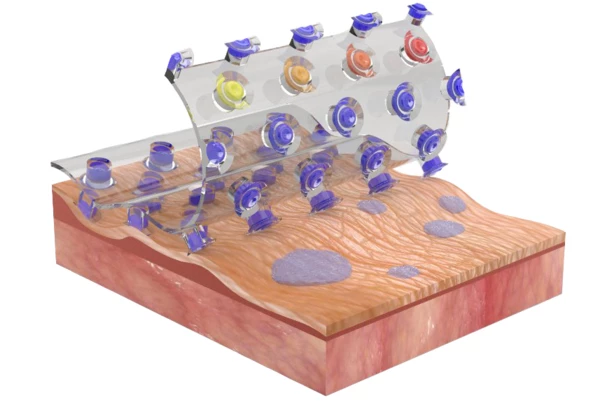When someone is suffering from a skin disease, diagnostic devices are often used to determine what disease it is, and how it's progressing. A new adhesive skin patch could make doing so quicker and easier than ever – and it's inspired by a diving beetle.
In order to latch onto females when breeding underwater, male Hydaticus pacificus beetles utilize suction-cup-like hairs on their forelegs, known as setae. These have evolved to provide a strong attachment to the wet and irregular surface of the females' exoskeletons.
Those setae have been copied in the experimental patch, currently being developed by scientists at Canada's McGill University. The device incorporates an array of tiny elastomer "microplungers" that painlessly adhere to the contours of the skin, and that remain attached even in the presence of sweat or other body fluids.
A hydrogel located in the base of each microplunger captures such fluids, and changes color in response to their pH levels. Utilizing machine-learning-based algorithms, it's therefore possible to detect the presence of pH-changing disease biomarkers within those fluids, based on the current color of that gel.

Mouse studies have shown that the new patch is considerably more accurate, easier to use and less expensive to analyze than currently utilized diagnostic devices. It's also better at maintaining adhesion to wet and/or curved skin, and shouldn't cause skin irritation or damage.
"We expect that this device will be applied to personalized skin treatment patches, medical adhesive materials, and diagnostic technologies," says the lead scientist, Bo-yong Park. "Based on the results of our research, we expect it could be used for on-site diagnosis of biomarkers for skin disease."
The patch is described in a paper that was recently published in the journal Science Advances.
Source: McGill University



